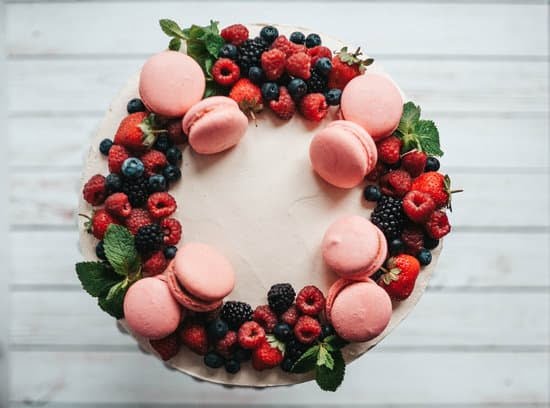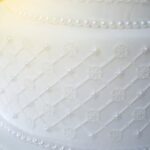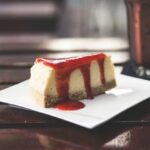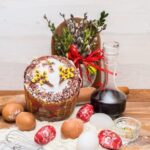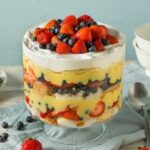Cake Decorating Airbrush is a revolutionary tool that has transformed the art of cake decoration, allowing bakers and decorators to create stunning and intricate designs with ease. This technique involves using an airbrush machine to spray edible colors onto cakes, resulting in beautifully blended shades, gradients, and various patterns. It has quickly become an essential tool in the world of cake decorating, offering endless creative possibilities.
Cake Decorating Airbrush is important for several reasons. Firstly, it provides decorators with the ability to achieve smooth and flawless finishes on their cakes. By spraying a thin layer of color onto the surface, airbrushing helps eliminate brushstrokes or uneven application that can occur when using traditional methods.
Furthermore, cake airbrushing allows for incredible versatility in design. With this technique, decorators can create intricate lace patterns, realistic textures like wood grain or marble, vibrant watercolor-like effects, and even three-dimensional designs. The possibilities are truly limitless when it comes to what can be achieved with a cake decorating airbrush.
Moreover, airbrushing offers efficiency and precision. As the colors are sprayed onto the cake using controlled bursts of compressed air, decorators have complete control over the intensity and direction of the color application. This level of control results in more precise work and eliminates time-consuming touch-ups that may be required when working with other techniques.
The History of Cake Decorating Airbrush
Cake decorating airbrush is a technique that has greatly evolved over time, allowing bakers and decorators to create stunning designs on cakes. The concept of airbrushing itself dates back to the late 19th century when it was initially used for painting artwork and automotive applications. However, it wasn’t until the mid-20th century that this technique made its way into the world of cake decorating.
In the early days of cake decorating airbrush, bakers would use simple hand-pumped airbrushes that were manually operated. These airbrushes had limited functionality and were not as precise as today’s modern versions. Despite these limitations, they allowed decorators to add color, shading, and intricate details to their cake designs, giving them a unique edge in the industry.
As technology advanced, so did cake decorating airbrushes. In the 1980s, electric air compressors were introduced, replacing the need for manual pumping. This innovation brought greater ease and efficiency to the process, making it more accessible for decorators of all skill levels.
Today, cake decorating airbrush systems have become highly sophisticated and versatile. They come with adjustable airflow controls, multi-speed options, and interchangeable nozzles that allow decorators to achieve a wide variety of effects on their cakes. From delicate gradients and smooth blends to intricate stencils and patterns, the possibilities are endless with cake decorating airbrush.
With each passing year, new advancements are being made in cake decorating airbrush technology. Manufacturers continue to refine their designs, ensuring that decorators have access to state-of-the-art equipment that meets their needs while pushing boundaries in creativity.
As this technique continues to evolve, it is safe to say that the history of cake decorating airbrush is still being written. The future holds even more exciting possibilities for this art form as bakers discover innovative ways to elevate their designs using this versatile tool.
Understanding the Basics
Cake decorating airbrush is a versatile tool that allows bakers and cake decorators to create stunning designs and effects on cakes. But how does it work? Understanding the basics of how cake decorating airbrush works and its components is essential for anyone looking to master this technique.
At its core, a cake decorating airbrush works by combining air, color, and pressure to spray edible paint or food coloring onto the surface of the cake. The components of a cake decorating airbrush typically include an air compressor, a trigger or button for controlling the airflow, a nozzle or needle for spraying the color, and a reservoir for holding the edible paint or food coloring.
The air compressor is responsible for creating the pressure needed to propel the color out of the nozzle or needle. It draws in clean air from its surroundings and compresses it into a narrow stream. This stream of pressurized air then mixes with the edible paint or food coloring in the reservoir. When the trigger or button is pressed, it releases this mixture through the nozzle or needle in a fine mist onto the cake’s surface.
To get started with cake decorating airbrushing, you will need to invest in a high-quality airbrush kit that includes all these essential components. Additionally, you will also need edible paints or food coloring specifically formulated for use with an airbrush. These paints are available in various vibrant colors and finishes like metallic or pearlized.
Overall, understanding how cake decorating airbrush works and its components is crucial for achieving precise control over your designs. With practice, you can master this technique and create beautiful cakes that are sure to impress.
Benefits of Cake Decorating Airbrush
Versatility and Precision
One of the major benefits of using a cake decorating airbrush is its versatility in creating various designs and effects on cakes. With an airbrush, decorators have the ability to achieve smooth gradients, delicate shading, intricate details, and even create stunning patterns.
The control offered by the airbrush allows for precise application of color, ensuring that every stroke is exactly where it needs to be. This level of precision is difficult to achieve with traditional methods such as piping or hand-painting, making the airbrush an invaluable tool for professional cake decorators.
Time-Saving
Cake decorating can be a time-consuming process, especially when it comes to intricate designs or large-scale projects. However, using a cake decorating airbrush can significantly reduce the time required to achieve beautiful results. The airbrush allows decorators to quickly and evenly apply color to large areas of the cake, eliminating the need for tedious brush strokes or careful piping.
Additionally, the quick drying time of the airbrushed colors means that decorators can move on to the next step or layer without having to wait for each color to dry. This saves both time and allows for a more efficient workflow.
Professional Looking Finishes
Investing in a cake decorating airbrush can elevate your cake designs from amateur-looking creations to professional masterpieces. The smooth and seamless finish achieved through airbrushing gives cakes a polished and professional appearance that is difficult to replicate with other techniques.
Whether you’re aiming for a flawless gradient background or intricate details on a wedding cake, using an airbrush can help you achieve that desired professional finish. This technique is particularly popular among professional cake decorators who want their work to stand out and impress clients with its high-quality finish.
By investing in a cake decorating airbrush, decorators gain access to not only versatile design possibilities but also save time while achieving more professional-looking finishes. With its precise control and quick application, the airbrush has become an essential tool in the world of cake decorating.
Whether you’re a beginner or an experienced decorator, incorporating the airbrush into your techniques can take your cake designs to new heights. In the next section, we will explore some of the popular techniques and effects that can be achieved with this versatile tool.
Popular Techniques
Cake decorating airbrush offers a wide range of techniques, styles, and effects that can elevate the appearance of any cake design. Whether you are a professional baker or an enthusiastic home baker, learning these popular techniques can help you create stunning and unique designs. Here are some of the most commonly used styles and effects achieved with cake decorating airbrush:
1. Gradient and Ombre Designs:
One popular technique is creating gradient or ombre designs using the cake airbrush. This involves blending two or more colors seamlessly to create a smooth transition from one color to another. This effect is often used to achieve visually appealing backgrounds or to add depth to certain elements of the design.
2. Stenciling:
Cake decorators frequently use stencils with their airbrush for precise and intricate designs. Stenciling allows you to add patterns, shapes, or images onto your cake effortlessly. By holding the stencil against the cake surface and spraying over it with the airbrush, you can create detailed designs such as lace patterns, floral motifs, or even personalized messages.
3. Texturing:
Airbrushing can also be used to add texture to your cake designs. By applying layers of color in a controlled manner using various techniques like splattering or sandblasting, you can achieve interesting textures that give your cakes a visually appealing 3D effect.
4. Shading and Highlighting:
Another technique made possible by cake decorating airbrush is shading and highlighting. By layering different colors and adjusting the intensity of the spray, you can create shadows and highlights on your cake, giving it depth and dimensionality.
5. Metallic Finishes:
Cake decorators often use metallic finishes achieved through airbrushing to add a touch of elegance and glamour to their cakes. With metallic colors like gold or silver, you can create shiny accents that mimic precious metals or achieve a metallic sheen for a futuristic or edgy look.
Experimenting with these popular techniques and effects using a cake decorating airbrush can take your cake designs to the next level. The possibilities are endless, so don’t be afraid to get creative and explore different styles that suit your unique artistic vision and enhance the overall aesthetics of your cakes.
Getting Started
To begin your journey into cake decorating airbrush, it is essential to gather the necessary tools and equipment. Having the right supplies will not only make the process smoother but also contribute to creating stunning designs. Below is a list of essential items you will need to get started with cake decorating airbrush:
- Airbrush Machine: The heart of cake decorating airbrush is the airbrush machine itself. This device sprays food-safe colors onto your cake using compressed air. Look for an airbrush machine that is specifically designed for cake decorating and has adjustable pressure controls.
- Compressor: A compressor is what powers your airbrush machine by providing a continuous stream of compressed air. Make sure to choose a compressor that is suitable for use with food and has the necessary pressure settings to achieve different effects.
- Food-Safe Colors: When it comes to cake decorating airbrush, using food-safe colors is crucial. These colors are specially formulated to be safe for consumption and come in a wide range of shades. You can find both pre-mixed colors or opt for separate color bottles that can be mixed to create custom shades.
- Stencils: Stencils are an excellent tool for creating intricate designs with ease. They come in various patterns and shapes, allowing you to add details, textures, or even specific themes to your cakes effortlessly.
- Cleaning Tools: Proper maintenance and cleaning of your airbrush equipment are vital for longevity and optimal performance. Invest in cleaning brushes, cotton swabs, and food-grade cleaning solutions specifically designed for airbrushes.
- Protective Gear: While working with any form of edible decoration, it’s important to prioritize safety precautions. Wear disposable gloves when handling the edible colors and consider wearing an apron or smock to protect your clothing from accidental splatters.
Now that you have gathered the essential tools and equipment needed, you are one step closer to creating beautiful designs using cake decorating airbrush. In the next section, we will provide a step-by-step guide for beginners on how to use the cake decorating airbrush technique to achieve stunning designs. Stay tuned.
Step-by-Step Guide
Setting up Your Workspace
Before you begin using a cake decorating airbrush, it’s important to set up your workspace properly. Start by ensuring that your work surface is clean and clear of any clutter. Lay down a protective covering, such as a plastic tablecloth or parchment paper, to catch any overspray.
Next, gather all the necessary tools and equipment. This includes the airbrush itself, an air compressor with adjustable pressure settings, food-safe coloring agents specifically designed for use with airbrushes, stencils or freehand templates for creating designs, and cleaning supplies such as brushes and edible cleaner.
Preparing Your Airbrush
Once your workspace is ready, it’s time to prepare your airbrush for use. Start by attaching the appropriate nozzle and needle size for the desired effect. Beginners often find that a medium-sized nozzle (around 0.4mm) works well for most applications.
Next, add your chosen coloring agent to the airbrush reservoir. Shake the bottle well before pouring it into the cup to ensure even distribution of color particles. It’s important to start with small amounts of color and gradually add more as needed since it’s easier to darken a shade than lighten it.
Using the Cake Decorating Airbrush
Now that your airbrush is prepared, it’s time to practice using it on a piece of scrap paper or cardboard before moving on to the cake itself.
Hold the airbrush like a pen or pencil in a comfortable grip. Gradually increase the airflow by turning on the compressor and adjusting its pressure until you achieve a steady stream of spray without any splattering.
When applying color onto the cake, hold the airbrush about 6-8 inches away from the surface in order to allow for proper coverage without oversaturating or pooling of color. Use smooth movements and hold evenly across each area being sprayed for a consistent finish.
Remember, practice makes perfect. Don’t be discouraged if your first attempts are not what you envisioned. As with any new skill, it takes time and patience to develop proficiency in cake decorating airbrush techniques.
By following this step-by-step guide, beginners can quickly learn the basics of using a cake decorating airbrush and create stunning designs on their cakes. With practice and creativity, the possibilities for beautiful and unique cake decorations are endless.
Tips and Tricks
Cake Decorating Airbrush is a versatile tool that can take your cake designs to the next level. Whether you are a beginner or an experienced decorator, there are always tips and tricks that can help you enhance your skills and create stunning designs. In this section, we will explore some expert advice to help you improve your cake decorating airbrush skills.
One important tip is to practice control and precision with your airbrush. Start by practicing on a piece of paper or a practice board before moving on to your actual cake. This will help you get comfortable with the pressure and distance needed to achieve the desired effect. Additionally, try experimenting with different angles and distances to create different gradients and patterns.
Another helpful trick is to layer colors gradually for a more realistic effect. Instead of spraying the colors directly onto the cake, try layering them one by one, starting with lighter shades and building up to darker ones. This technique can give your design depth and dimension.
Cleaning and maintaining your airbrush properly is essential for optimal performance. After each use, make sure to thoroughly clean all parts of your airbrush with warm water or cleaning solution recommended by the manufacturer. This will prevent clogging and ensure that your airbrush continues to deliver consistent results.
| Tips | Tricks |
|---|---|
| Practice control and precision | Layer colors gradually |
| Clean and maintain airbrush | N/A |
Troubleshooting
Using a cake decorating airbrush can be an incredibly rewarding and creative experience. However, like any other technique, it comes with its own set of challenges. In this section, we will explore some common issues that cake decorators may encounter when using an airbrush, as well as their possible solutions.
One common challenge that decorators face is clogging of the airbrush nozzle. This can happen when the paint or food coloring being used is too thick or contains particles that are too large for the nozzle to handle. To prevent clogging, it is important to strain the paint or food coloring before placing it in the airbrush reservoir. Additionally, regularly cleaning the nozzle with warm water or a specialized cleaning solution can help maintain its proper functioning.
Another issue that decorators may come across is uneven spray patterns or sputtering. This could be caused by a few factors, such as inconsistent air pressure or a misaligned needle. To troubleshoot this problem, make sure that your air compressor is set at the appropriate pressure and check that your needle is properly aligned with the nozzle. It may also be helpful to practice different spraying techniques to achieve a smoother and more even finish.
Lastly, cake decorators may encounter issues with color bleeding or smudging during the spraying process. This can occur when multiple colors are being used and they start to mix together unintentionally. To avoid color bleeding, allow each layer of paint to dry before applying another color on top of it. Using stencil guides can also help create sharp edges and prevent colors from blending together.
By being aware of these common challenges and knowing how to address them effectively, you can overcome any obstacles that come your way while using a cake decorating airbrush. Troubleshooting is an integral part of mastering this technique and with time and practice, you will be able to achieve stunning designs without any hiccups.
Please note: For more specific troubleshooting tips and techniques, it is recommended to refer to the instruction manual provided by the manufacturer of your particular cake decorating airbrush kit. These manuals often include detailed troubleshooting instructions tailored to the specific model you are using.
Beyond the Basics
One of the exciting aspects of cake decorating airbrush is the ability to go beyond the basics and explore advanced techniques and creative applications. Once you have mastered the foundational skills, you can venture into more complex designs that will truly elevate your cake creations to new heights. In this section, we will delve into some of these advanced techniques and how they can be applied to create unique and stunning designs.
One advanced technique that is widely used in cake decorating airbrush is stenciling. Stencils are pre-cut designs or patterns that can be placed on top of the cake, allowing for precise and intricate details to be added with ease. By using different stencils, you can create various effects such as lace, floral patterns, or even realistic textures like woodgrain or marble.
To achieve this technique, start by securing the stencil onto the cake surface using a gentle adhesive spray or tape. Then, with a steady hand and a controlled spray of airbrush color, fill in the cut-out areas of the stencil. Lift off the stencil carefully to reveal the beautifully detailed design.
Another advanced technique in cake decorating airbrush is color blending. With this technique, you can seamlessly blend two or more colors together on the cake surface to create smooth gradients or ombré effects.
Start by spraying one color along one edge of the area you want to blend and then gradually introduce another color from the opposite edge. By adjusting the pressure and speed at which you spray, you can control how smoothly or quickly the colors transition into each other.
Creative applications of cake decorating airbrush also extend beyond traditional cakes. Airbrushing can be used to decorate cupcakes, cookies, fondant figures, and even chocolate creations. The versatility of this technique opens up endless possibilities for artists and bakers alike to experiment with different mediums and expand their artistic repertoire.
In summary, taking your cake decorating airbrush skills beyond the basics allows you to explore advanced techniques and creative applications. Stenciling and color blending are just a couple of examples of the many possibilities this technique offers. By pushing the boundaries of what can be achieved with an airbrush, you can truly elevate your designs and create show-stopping cakes that will delight both the eyes and tastebuds.
Top Cake Decorating Airbrush Kits and Brands
Cake decorating airbrush is a technique that has gained popularity among professional bakers and cake decorators. To achieve the best results, it is important to invest in high-quality equipment and kits. In this section, we will explore some of the top cake decorating airbrush kits and brands that are known for their quality and performance.
One highly recommended brand for cake decorating airbrush kits is Master Airbrush. Known for its durability and versatility, Master Airbrush offers a range of kits suitable for both beginners and experienced decorators. Their kits often include an airbrush compressor, air hose, multiple airbrush guns with different nozzle sizes, and a variety of colors. With their reliable performance, Master Airbrush kits are favored by many professionals in the industry.
Another top brand in the market is Cake Boss. The Cake Boss decorating airbrush kit is designed specifically for cake decoration purposes and comes with a high-quality dual-action airbrush gun. It also includes multiple bottles of edible food coloring, stencils, and an instruction manual to guide beginners through the process. Cake Boss is known for its attention to detail and commitment to providing excellent products.
| Brand | Features |
|---|---|
| Master Airbrush | – Durable and versatile
|
| Cake Boss | – Designed specifically for cake decoration
|
When choosing a cake decorating airbrush kit or brand, it is important to consider your specific needs as well as your budget. It can be beneficial to read customer reviews and seek recommendations from professionals in the industry. By investing in high-quality equipment, you will be able to achieve stunning designs and elevate your cake decorating skills to the next level.
Conclusion
In conclusion, the art of cake decorating airbrush is a versatile and innovative technique that can elevate your cake designs to the next level. By using an airbrush, you have endless possibilities to create stunning designs and effects that are not easily achievable with traditional methods.
Throughout this article, we have explored the history, basics, benefits, techniques, tools, tutorials, tips and tricks, troubleshooting tips, advanced techniques and creative applications of cake decorating airbrush. It is evident that this technique offers numerous advantages to both professional bakers and hobbyists alike.
Investing in a high-quality cake decorating airbrush kit from reputable brands can greatly enhance your skills and ensure optimal results. The precision and control offered by these kits allow you to create intricate details with ease. Additionally, by experimenting with different styles and effects using the airbrush technique, you can unleash your creativity and bring unique designs to life.
Whether you are a beginner or an experienced baker looking to expand your repertoire, embracing the art of cake decorating airbrush is definitely worth exploring. Not only will it provide you with endless opportunities for creativity but also leave a lasting impression on anyone who sees your beautifully decorated cakes.
So go ahead, invest in the necessary tools and equipment, follow our step-by-step guide, take advantage of expert advice, and let your imagination soar as you master the art of cake decorating airbrush.
Frequently Asked Questions
Which airbrush is best for cake decorating?
There are several airbrush options that can be considered best for cake decorating, depending on personal preference and specific requirements. One popular choice among cake decorators is the dual-action gravity feed airbrush. This type of airbrush allows for greater control over the airflow and paint volume, making it easier to achieve intricate details and smooth gradients on cakes.
Additionally, a compressor with adjustable pressure settings is essential to ensure consistent results and prevent overspray or uneven coverage. Ultimately, the best airbrush for cake decorating will depend on individual needs and skill level.
Can an airbrush be used for cake decorating?
Yes, an airbrush can definitely be used for cake decorating. In fact, many professional cake decorators rely on airbrushing techniques to create stunning designs and finish their creations with a flawless look. Airbrushes offer a range of advantages compared to traditional methods like using brushes or sponges.
They allow for precise control over the paint application, resulting in more evenly distributed colors and smoother finishes. From adding intricate designs, creating shading effects, or even applying a base layer of color, an airbrush provides endless creative possibilities in cake decorating.
How do you airbrush cake decorating?
Airbrushing in cake decorating involves a few key steps to ensure optimal results. First, it is important to mix edible food coloring with a suitable liquid medium such as alcohol-based solutions or water-based food colorings specifically designed for airbrushing. These mediums are necessary to thin out the colors and make them compatible with the airbrush system.
Next, attach your desired nozzle and needle combination to the airbrush gun according to the level of detail required. Adjusting the compressor’s pressure setting is vital to control both airflow and paint volume during spraying. Practicing on a spare surface before applying any color onto the actual cake helps ensure familiarity with these settings.

Welcome to our cake decorating blog! My name is Destiny Flores, and I am the proud owner of a cake decorating business named Cake Karma. Our mission is to provide delicious, beautiful cakes for all occasions. We specialize in creating custom cakes that are tailored specifically to each customer’s individual needs and tastes.

